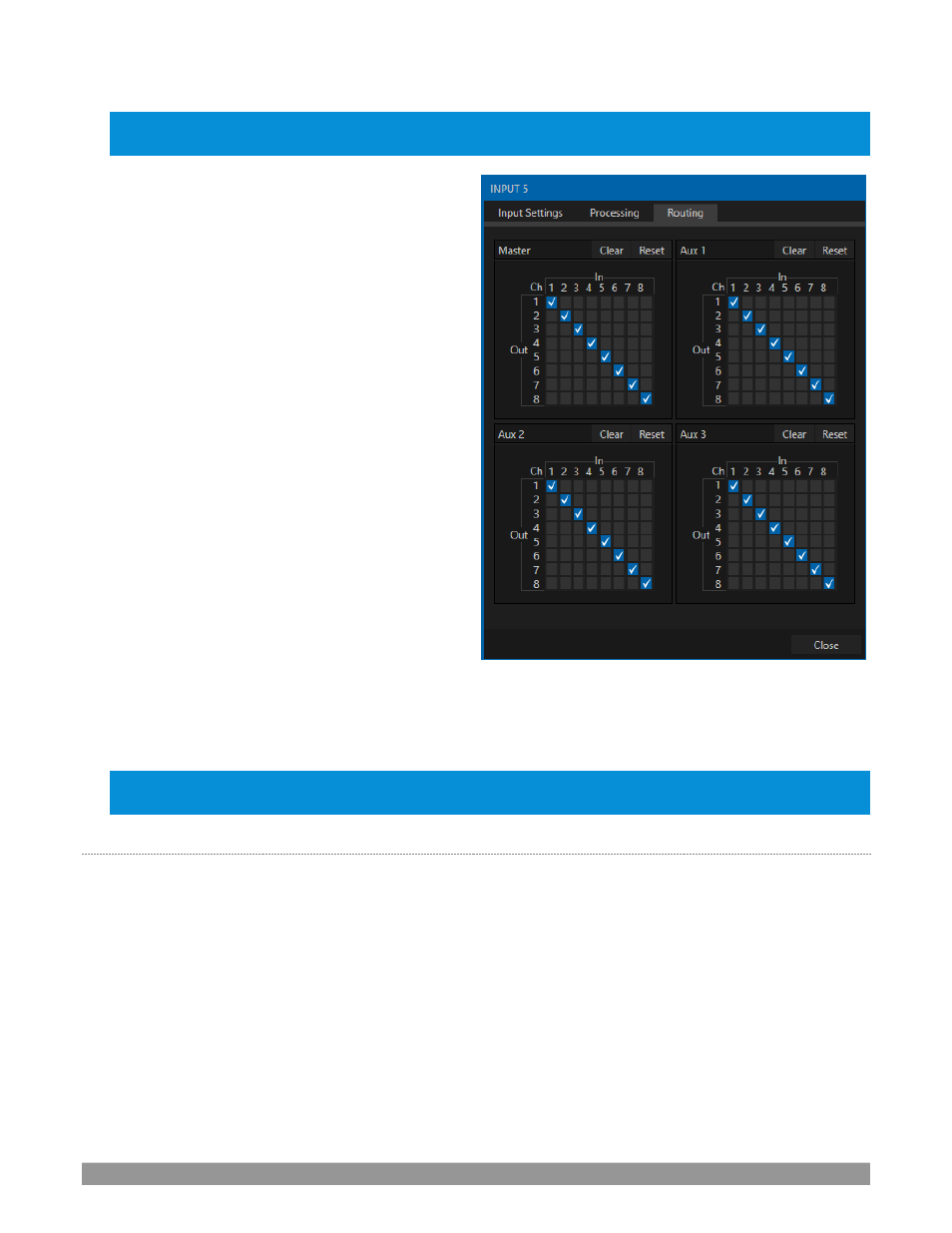NewTek TriCaster TC1 (2 RU) User Manual
Page 185

P a g e | 169
Hint: A secondary mix, prepared on an Aux bus, can serve many purposes. For example, you might wish to
record a mix with all sound from talent microphones but that excludes any sound effects or music.
Let’s summarize what we have learned so far:
A
‘
send
’
pipes audio signals from an input to a discrete
pathway called a
‘
bus
’. Multiple sends can be used to
place sound from a given source onto one or more
internal busses.
What else should we know?
Each audio bus is discrete. Each can be directed
along different output paths. And even when the
blend of signals it carries is otherwise identical to
another bus, it can be
processed
separately. Thus its
levels, equalization, and compressor/limiter settings
can be unique.
The
Audio
Mixer
provides four primary
audio busses.
These are
identified
in the
Audio Mixer
as:
•
MASTER
•
AUX 1, 2 and 3
The
Audio
Mixer
provides controls for each of these
busses, allowing you to manage levels and signal
processing. It is important to understand the
distinction between
busses
and
outputs
. Now that we
understand the former, let’s consider the latter.
An
output
may be physical, or virtual
–
i.e., it may involve a connector on the rear panel, or not. For example,
audio recorded internally does not require an output connector. Likewise, it may initially be analog or digital.
Note: Analog outputs 1 and 2 are permanently assigned to MASTER and AUX 1, respectively. In contrast, digital
(or ‘embedded’) outputs are configurable in the
Output Configuration panel.
S
UB
-M
IXES AND
‘M
IX
M
INUS
’
At times you may require specially configured audio mixes. For instance
–
some installations call for sending
audio from one or more internal sources (such as a
DDR
or the
Sounds
player) to a secondary distribution
system.
Alternatively, you may want a ‘clean’ outp
ut from one or more sources for use apart from the main
primary output
mix.
Specialized sub-mixes of this latter sort
are often referred to as ‘mix
-
minus,’
since one or more sources are
deliberately subtracted from the main program. Mix-minus capabilities can be invaluable for productions
like ‘phone
-
in’ shows. Th
e remote caller needs to be able to hear the interviewer; but if you simply send the
primary mix back to him, he is forced to endure a late-arriving echo of his own voice. Needless to say, this
would be confusing and undesirable.
FIGURE 205 (VMC1)
